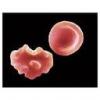Leaderboard
-
in all areas
- All areas
- Records
- Record Comments
- Record Reviews
- Jobs
- Jobs Comments
- Jobs Reviews
- Questions
- Question Comments
- Question Reviews
- Links
- Links Comments
- Files
- File Comments
- File Reviews
- Images
- Image Comments
- Albums
- Album Comments
- Records
- Record Comments
- Events
- Event Comments
- Blog Entries
- Blog Comments
- Topics
- Posts
- Status Updates
- Status Replies
-
Custom Date
-
All time
June 28 2007 - April 26 2024
-
Year
April 26 2023 - April 26 2024
-
Month
March 26 2024 - April 26 2024
-
Week
April 19 2024 - April 26 2024
-
Today
April 26 2024
-
Custom Date
10/17/2013 - 10/17/2013
-
All time
Popular Content
Showing content with the highest reputation on 10/17/2013 in all areas
-
Welcome! I am also new and I have been amazed at the wealth of knowledge available here.1 point
-

AABB 6.2.3.1
PammyDQ reacted to David Saikin for a topic
I don't think you need to track which equipment was used for each individual test. You should be able to demonstrate that all equipment used on a particular day was in proper working order.1 point -

Introduction
BBNBHM reacted to Malcolm Needs for a topic
Hi BBNBHM and welcome to this fantastic site. I never stop learning from the posts put on here by some extraordinarily generous people.1 point -

Anti-M quandry Looking for feedback
L106 reacted to Malcolm Needs for a topic
Geoff Daniels quotes no less than 7 papers in the 3rd edition of his book Human Blood Groups. They are: Yasuda H, Nollet K, Ohto H. A review of hemolytic disease of the fetus and newborn due to MN incompatibility in Japan. Vox Sang 2009; 97 (Suppl. 1): 125 (Abstract). Stone B, Marsh WL. Haemolytic disease of the newborn caused by anti-M. Br J Haematol 1959; 5: 144-147. Macpherson CR, Zartman ER. Anti-M antibody as a cause of intrauterine death. A follow-up. Am J Clin Path 1965; 43: 544-547. Yoshida Y, Yoshida H, Tatsumi K, et al. Successful antibody elimination in severe M incompatible pregnancy. New Eng J Med 1981; 305: 460-461. Duguid JKM, Bromilow IM, Entwistle CD, Wilkinson R. Haemolytic disease of the newborn due to anti-M. Vox Sang 1995; 68: 195-196. Furukawa K, Nakajima, T, Kogure T, et al. Example of a woman with multiple intrauterine deaths due to anti-M who delivered a live child after plasmapheresis. Exp Clin Immunogenet 1993; 10: 161-167. Kantra T, Yuce K, Ozcebe OI. Hydrops fetalis and intrauterine deaths due to anti-M. Acta Obstet Gynecol Scand 1996; 75: 415-417. Hinchliffe RF, Nolan B, Vora AJ, Stamps R. Neonatal pure red cell aplasia due to anti-M. Arch Dis Child fetal Neonatal Ed 2006; 91: F467-F468. Wikman A, Edner A, Gryfelt G, Jonsson B, Henter J-I. Fatal hemolytic anemia and intrauterine death caused by anti-M immunization. Transfusion 2007; 47: 911-917. Geoff speculates that anti-M could have a similar aetiology to anti-K, in that it attacks very early erythroblasts, leading to a sort of suppression of erythropoiesis, hence the neonatal pure red cell aplasia.1 point -
You might also check the CMS reimbursement rules and the diagnosis codes for the patients. That could give you more information about whether or not the testing is considered routine for the patient's condition.1 point
-

blood bank results documentation
Malcolm Needs reacted to mollyredone for a topic
We save antibody workups on antigram papers in the patient's BB chart, as well as antigen typing,since paper is where we document our QC results for the antisera, just documenting the interpretation in the computer. All other QC and patient results are entered directly in the computer.1 point -

blood bank results documentation
Malcolm Needs reacted to tricore for a topic
I totally agree with the posters who said record directly in the computer system.. The chance of transcription errors is too great. Get rid of as much paper as you can. Do you save the original pieces of paper on which the result is written for the required amount of time?1 point -
We do confirm the antigen typing performed by the reference lab, to the extent possible. We do not always have the appropriate antiserum to do so. The thought behind it is, if we have to confirm the ABO of a unit, why not also confirm special typing.1 point
-

blood bank results documentation
Malcolm Needs reacted to LCoronado for a topic
We record our antigen typing results on paper and put only the interps into Cerner. However, most of our test results are recorded directly into the computer system. At one time we were cited by the State for too much double documententation (we were still on paper at the time, using history cards and a log book) because this was percieved as an increased risk for transcription errors.1 point -

blood bank results documentation
Malcolm Needs reacted to David Saikin for a topic
If you have a BBIS you should just document in that. There is no need for paper documentation (if you validated your system and if you use it you better have validated it). Resulting on paper and then transcribing into your BBIS is just another step where a transcription error can occur. I inspected a hospital years ago that did all the work on paper and then back-entered into the computer. When we went to the pt area to watch a transfusion we had to bring the blood back because the patient needed irradiated products (documented in the computer not the pt record card). You have validated your BBIS - dump the paper. I know I have lost jobs because I told the interviewing staff that the first thing I would do is scrap the paper recording . . . the BBIS truth tables alone make this a wise decision.1 point -
blood bank results documentation
Malcolm Needs reacted to Sandy L for a topic
Virtually all results are recorded directly into the LIS. I would view double recording as an extra opportunity to make a clerical error. We do have downtime worksheets so that results can be recorded on paper during computer downtime. Some tech who are less comfortable with antigen typing will use the worksheet to record antigen results on paper and enter into the computer. That's about the only time we see double recording of results. Most will record antigen results directly into the LIS. We do also have an Antibody ID worksheet and a few things are recorded there, additional investigational studies, ABO typing discrepancy workup. Another exception is that antibody panel results are recorded on paper on the panel manufacturer's antigram. These are not double recorded (paper only) as we only enter the interp in the computer.1 point -
Are you thinking of the Matuhasi-Ogata phenomenon? I saw this a couple months ago when a patient was having a transfusion reaction caused by anti-hrS/hrB antibody. We could elute their other antibodies from their cells even though they had been transfused antigen negative blood.1 point
-
Call the company's tech support, maybe they can help you. Otherwise your sales person has some 'splaining to do.1 point
-

Antibodies Identified at Another Facility
BBNBHM reacted to John C. Staley for a topic
Thanks for the responses. I've discovered over the years that blood bankers love to live in the land of "What If". You can be confident that I own a large home right in the middle of that land. I'm finding that patients are taking a more direct hand in their care and are much more knowledgeable than they were 30 years ago. While info from a patient should be confirmed if possible, much more often than not they are reasonably correct if not complete in their info.1 point

